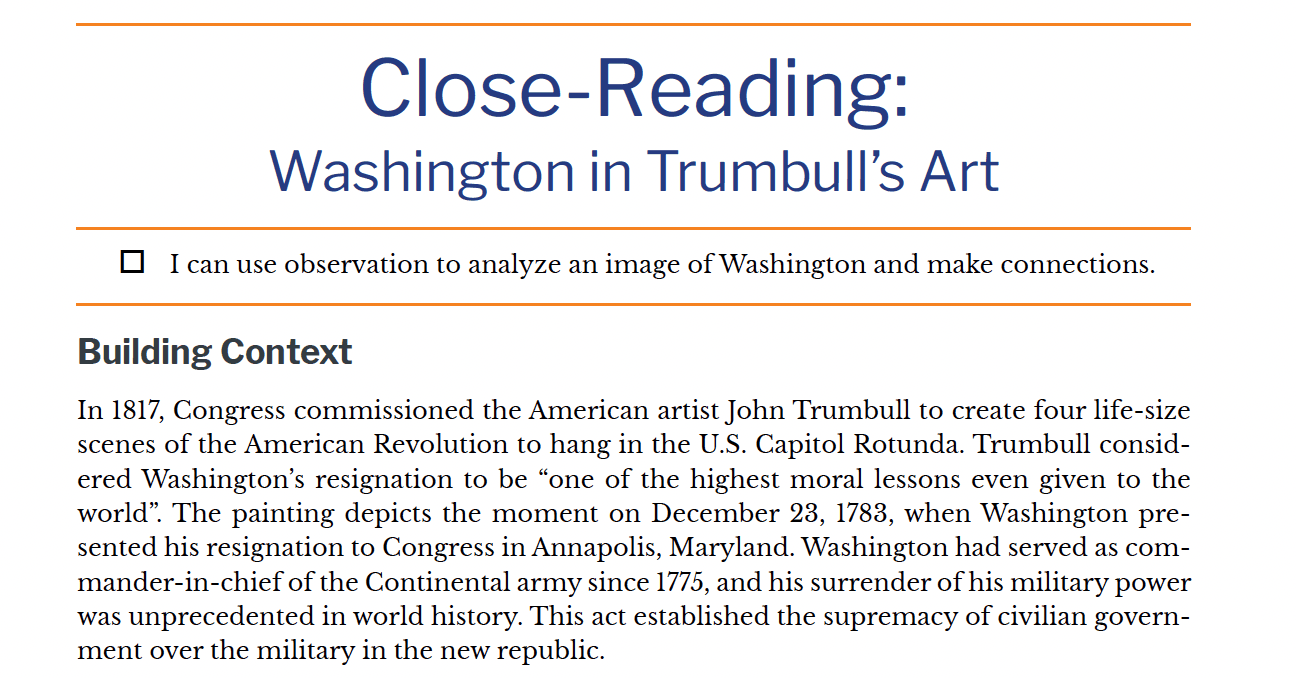George Washington and Prudence Primary Source Analysis
- I can use observation to analyze an image of Washington and make connections.
Building Context
In 1817, Congress commissioned the American artist John Trumbull to create four life-size scenes of the American Revolution to hang in the U.S. Capitol Rotunda. Trumbull considered Washington’s resignation to be “one of the highest moral lessons even given to the world”. The painting depicts the moment on December 23, 1783, when Washington presented his resignation to Congress in Annapolis, Maryland. Washington had served as commander-in-chief of the Continental army since 1775, and his surrender of his military power was unprecedented in world history. This act established the supremacy of civilian government over the military in the new republic.
For more information and a video analysis of this painting, watch this episode of BRIdge from the Past.

General George Washington Resigning His Commission, oil on canvas by John Trumbull, U.S. Capitol.
Source link: https://bit.ly/3OYZeDz
Analysis Questions
- How did Trumbull make Washington the focal point of the painting?
|
|
- Look at the faces of the other people in the room. At what is their attention directed? How many people are looking elsewhere? What does this communicate about their attitudes about Washington and what is occurring?
|
|
- A large, throne-like chair is behind Washington. A regal-looking cloak is resting on the empty chair. What reference is Trumbull making about what Washington is doing in this painting?
|
|
- What statement does this painting make about Washington, power, and self-restraint?
|
|
